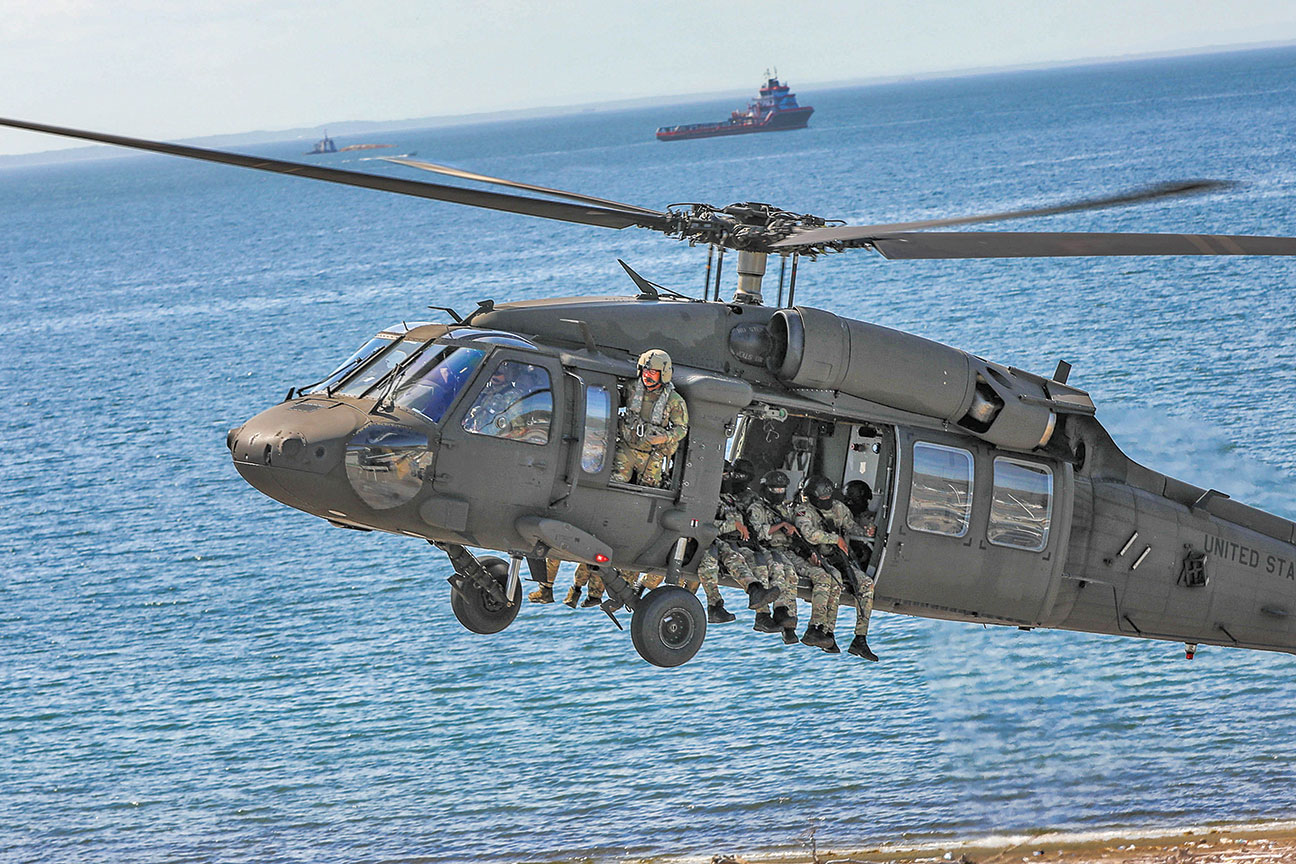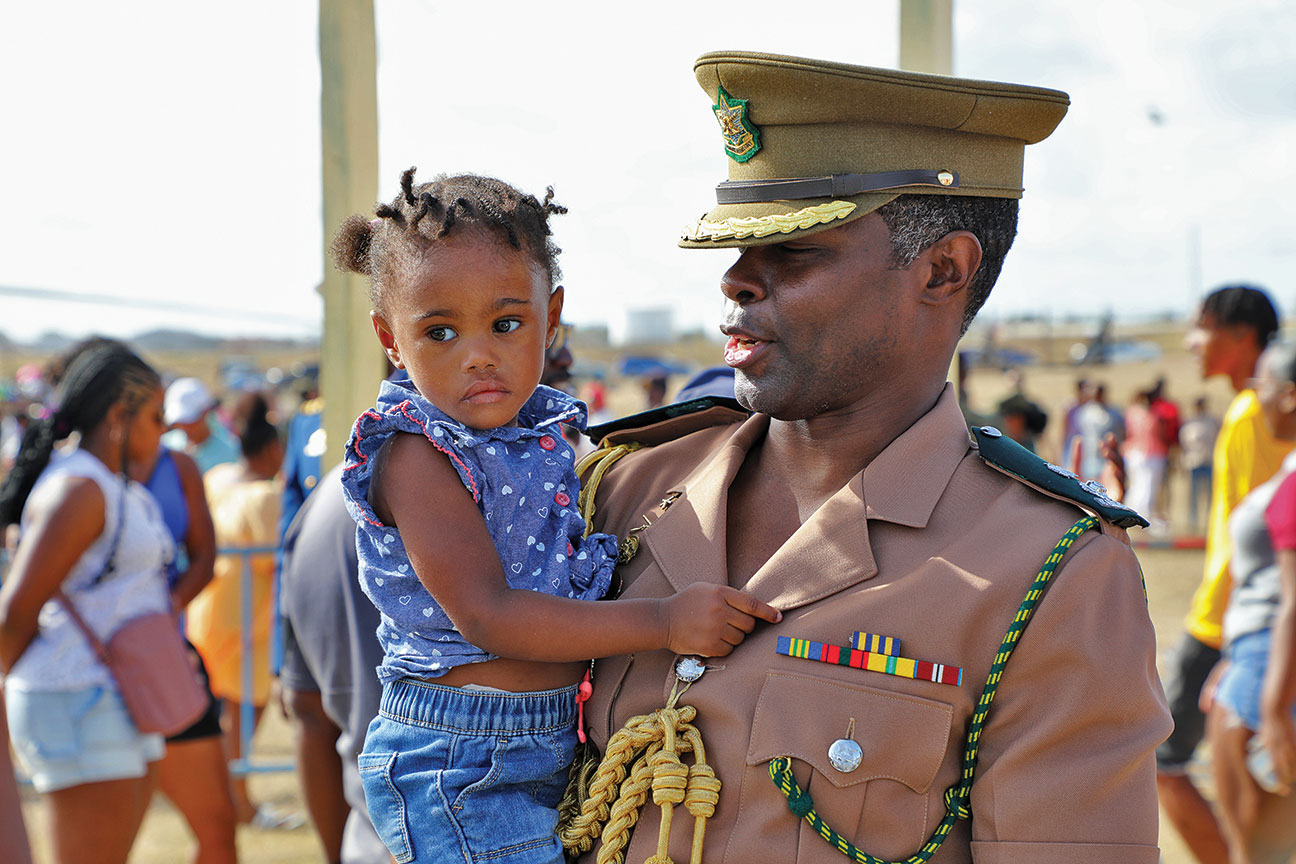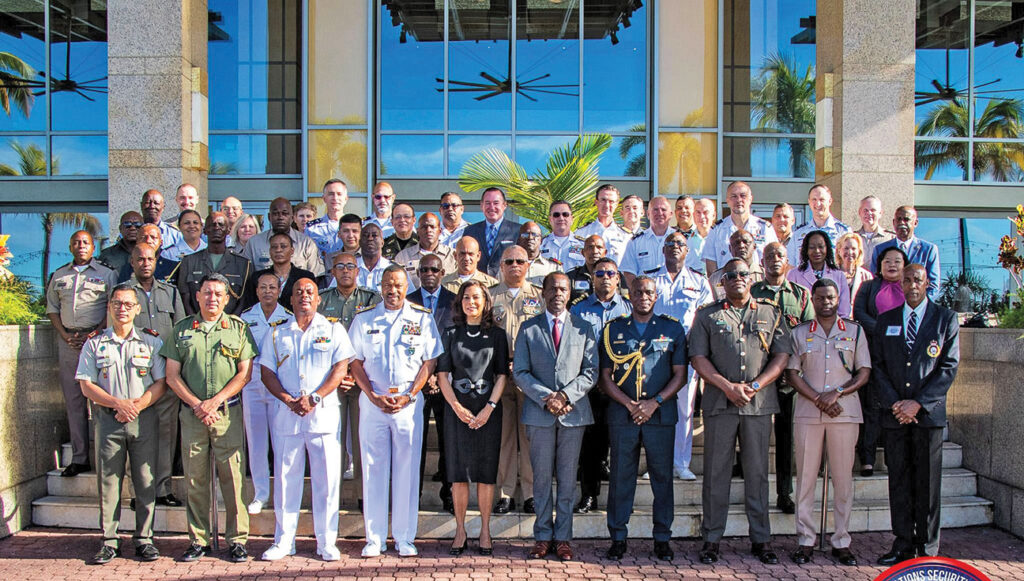Caribbean and U.S. defense leaders are photographed at the 2024 Caribbean Nations Security Conference in Trinidad and Tobago. U.S. SOUTHERN COMMAND
During the early days of the Cold War, former U.S. Secretary of State John Foster Dulles conceptualized the Island Chain Strategy as a maritime containment effort to curtail the influence and spread of communism in the Pacific. This concept was part of Dulles’ overarching foreign policy goal of developing international security arrangements to contain the growing global communist threat.
The primary emphasis of this strategy was securing important archipelagos along different maritime routes and preventing expansion and power projection from competitors. Since the end of the Cold War, the Island Chain Strategy has taken prominence in U.S. and Chinese military planning. However, the application of this concept solely focuses on the Pacific.
Despite its origin and distinct impression on contemporary U.S. strategic thinking in the Indo-Pacific region, the Island Chain Strategy can be applied to other regions that have a direct and measured impact on U.S. homeland defense. Application to the Caribbean not only highlights the importance this area has on U.S. global strategic competition efforts, but it also shows how the enduring partnership between Caribbean nations and the U.S. is beneficial for the safety and security of this underestimated region of the Americas, for the U.S. homeland and for the rules-based international system.

Island Chain Strategy
The Island Chain Strategy seeks to establish a series of defensive lines formed by groups of islands that serve as both physical and geopolitical barriers to limit adversarial access to critical maritime zones. These islands often are situated along essential trade routes, near the approaches to a major power’s territory or along strategic lines of communication.
The core element of this strategic thought is establishing a military forward presence that allows a state to control strategic choke points and project power to deter aggression and counter threats. It is important to note that the successful application of this concept doesn’t solely rely on military presence. Maintaining and reinforcing relationships with partners and allies also is critical for achieving success. Through partnership, cooperation bonds are formed, interoperability is achieved and a credible presence is maintained.
There are three established lines of defense within U.S. interpretation. The first defensive line is from the Kurils to the Japanese home islands, the Ryukyus to Taiwan, the Philippines and down to Indonesia. The second line goes from Japan through the Marianas to Micronesia. The third line is concentrated in and around Hawaii. Contemporary planners have suggested adding fourth and fifth defensive lines centered in the Indian Ocean and potentially out to China’s base in Djibouti to counter the Chinese Communist Party’s (CCP) developing maritime strategy. However, when taking a holistic view, other regions may have a direct, demonstrable impact on U.S. homeland defense. One such region is the Caribbean.

Caribbean Security and U.S. Homeland Defense
Caribbean security has a direct link to U.S. security. Based on its geostrategic location, besides the land borders shared by the U.S. with Canada and Mexico, the Caribbean provides direct access to the U.S. The region is home to key maritime trading routes, and the Caribbean Sea serves as a gateway to the Atlantic and the Gulf of America.
The region is also a major transit point for narcotics and other illicit commodities going north to the U.S. and east to Africa and Europe. Additionally, the Caribbean also has a growing presence of U.S. strategic competitors. Both the CCP and Russia have increased their influence throughout the region in the form of predatory economic initiatives, dual-use infrastructure projects and increased malign military/intelligence cooperation. The presence of these strategic competitors contests U.S. freedom of maneuver and applies pressure to the U.S. southern flank. Finally, the Caribbean is a primary source of both legal and illegal migration, and it serves as a point of origin for oil and natural gas shipments, which impact the energy security of the U.S. In the absence of any attention to the Caribbean, regional stability can be threatened, jeopardizing key U.S. defense objectives.
Enduring Partnership-Next Step
The Caribbean-U.S. partnership is historical, has deep roots based on shared experiences, and is enabled by the close cultural ties between the geographic neighbors. Both U.S. Southern Command (USSOUTHCOM) and U.S. Northern Command (USNORTHCOM) conduct a wide range of annual operations, activities, investments and exercises with Caribbean partners. Examples of these activities include USSOUTHCOM’s Caribbean exercise Tradewinds, the Caribbean Nations Security Conference, the Lesser Antilles Medical Assistance Team and USNORTHCOM’s security cooperation efforts with The Bahamas, such as the maritime surveillance system radar sites. As a formidable next step, not only should key yearly activities and events occur, but also the Caribbean should be included within the U.S. island chain strategic narrative. By achieving this, the U.S. and its allies can continue building relationships with trusted partners and ensure this enduring partnership supports not only regional collective defense but also contributes to international security.

